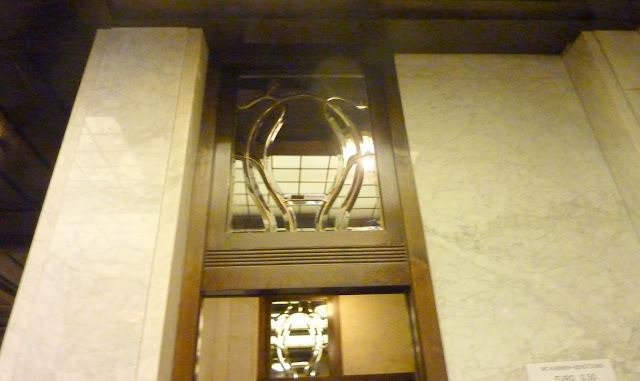We've just come back from Vienna having spent spent a week there. Even though I had been there before when I was twelve years old, I did not remember much so it was like visiting the city for the first time.
It's a very grand place, and evidence of Vienna's imperial past is everywhere: I have never seen so many lavish palaces in one small place before.

The Cathedral is one of the tallest religious buildings on the planet and you can see its spire from almost every corner of Vienna.
Most of the building that stands today, including the two large towers, dates from the 14th century when the church was reconstructed. The cathedral was badly damaged by the fire that spread through the Stephansdom Quarter in the chaos that followed the capture of the city by Soviet forces in 1945. Decades of painstaking restoration work have made the damage almost impossible to detect.
The towers are truly formidable. The South Tower rises 450 feet over Stephansplaz. During the Ottoman siege of Vienna, the tower served as the main observation and command post for the defence of the old walled city.
The glory of the cathedral is its ornately patterned, richly coloured roof, covered with 23,000 glazed tiles.
Ludwig van Beethoven discovered the totality of his deafness when he saw birds flying out of the bell tower as a result of the bells' tolling but could not hear the bells.
Unlike many other European cathedrals, the interior of St Stephen's was never scrubbed bare by Protestants.
The main part contains 18 altars, with more in the various chapels. The High Altar is the first focal point when entering, built over seven years from 16541 to 1647 as part of the first refurbishment of the cathedral in the baroque style.
Every one of its vast structural columns is decorated by life-size statues of biblical figures and saints; some are elaborately painted, while others have been carved from colourful and exotic stone.
Gold abounds
The entrance to the crypt and tombs which we did not visit.
The sheer scale of the interior space is overwhelming - these huge cast iron gates are the entrance to one of the chapels.
The buildings in this area are majestic
many of which are adorned with statues.
Different architectural styles sit comfortably next to each other
and because this is a shopping area and all the ground floors are taken up with shops, you have to keep looking up to see the details of the buildings.

Quite a few of the exclusive shops have guards outside.
It's very busy here, even on a Sunday when the shops are closed, and one day we came across a group campaigning for freedom for Palestine, a cause that is very close to my heart
the displays were good and informative.
On Graben we came across these Jugenstil (the Austrian version of Art Nouveau) public toilets
It is thought that they were designed by Adolf Loos, but some think that it was Wilhelm Beetz
I had to go in - the door gave a taste of what lay inside

dark, shining wood,
marble walls and elegant but simple lighting
bronze decoration.
By the public toilets, on Graben 16, is this Jugenstil building, designed by Pietro Palumbo
The corner of the building is rounded like a tower
and has mosaic reliefs by Leopold Forstner.
A closer look at the mosaic
The Plague Column is also on Graben. An 18 metre high gilded copper pyramid, baroque in style, commemorating the bubonic plague epidemic of 1679.

The oldest church building (of which nothing remains today) dates back to the early Middle ages. The construction of the new Baroque church was begun around 1701. The design was inspired by the St Peter's Basilica of the Vatican in Rome. The new church was the first domed structure in baroque Vienna.
The first impressions on entering the church are overwhelming due to its rich interior filled with golden stucco.

The baroque high altar was created by Antonio Galli Bibiena and Martino Altomonte.
The gilded ornate pulpit is a sculpture by Matthias Steinl with on top of the canopy a representation of the Holy Trinity.

Lots of pharmacies in the city, but this, on Bognergasse, was our favourite

The mosaic of the two angels is typical of the period
great door, again typical of the period
while the interior dates before the turn of the last century.
This is a shopping area which is full of cafes and restaurants, with lots of seating outside for when the weather permits
Looking up is essential.
as the plaque testifies
detail.
































No comments:
Post a Comment